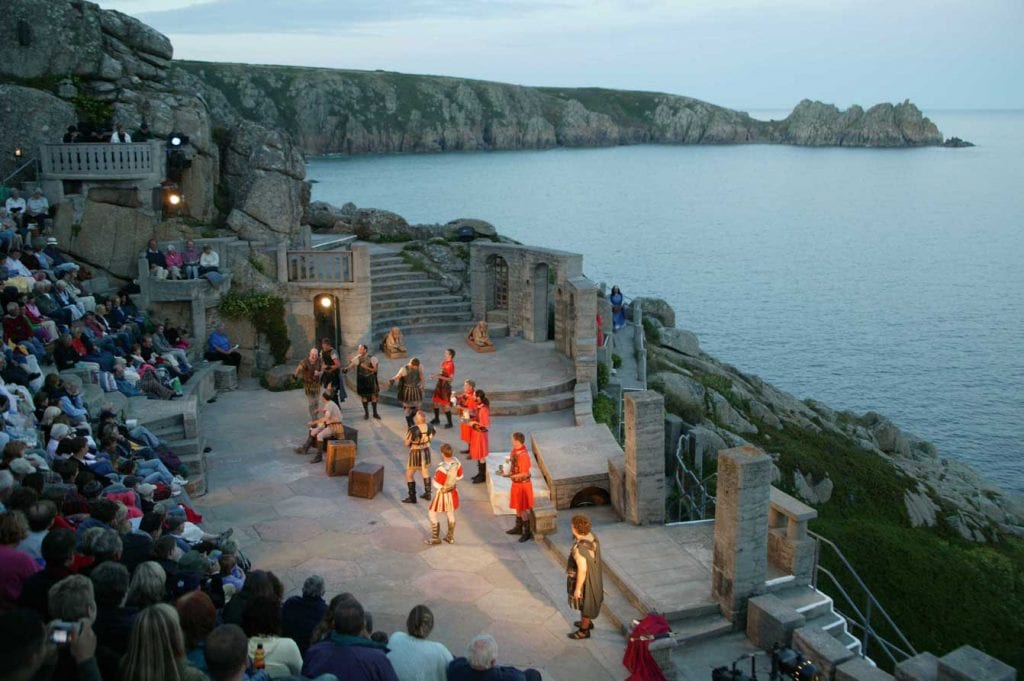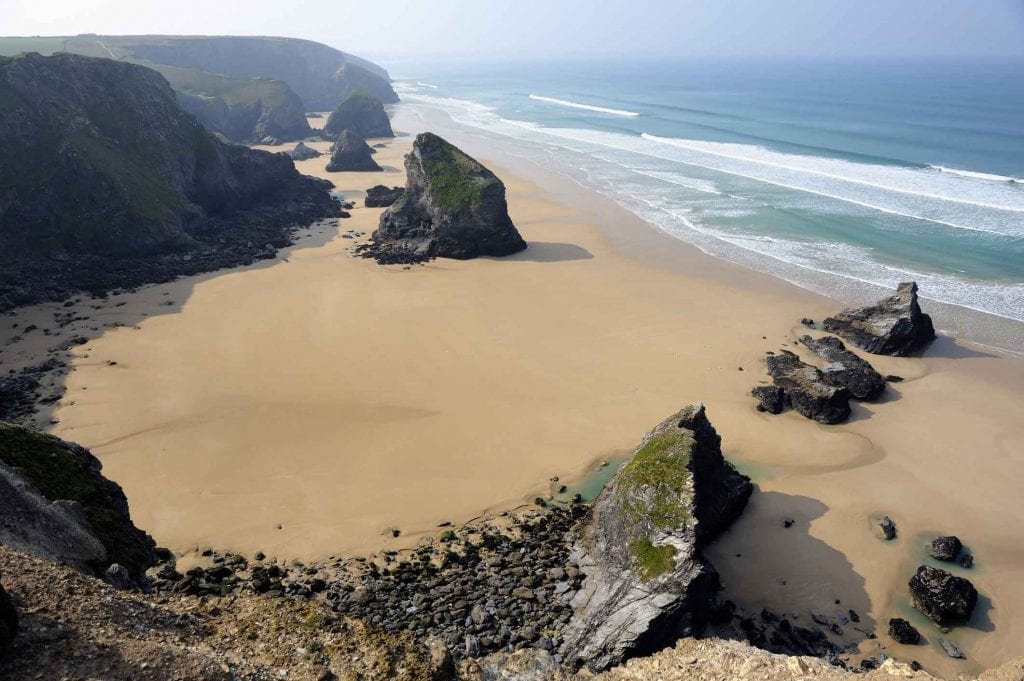Approaching Marazion on a misty day, St Michael’s Mount appears to float on the water just offshore. The turreted medieval castle half hidden in low cloud stands, as it has done for hundreds of years, overlooking the spectacular sweep of Mounts Bay. Already there’s a tinge of excitement as we cross the cobbled causeway from the shore with the rising tide lapping at our feet. This is a place with a history stretching back millennia, enough legends to thrill a child at bedtime for a week and a real sense of mystery, which was already beginning to take hold.
The ebb and flow of the tide
The harbour master greets us as we set foot on the island. “Another few minutes and you would have had to use the boat”, they says. “The sea is just about to cover the causeway”. On the island everything’s governed by the ebb and flow of the tide. “It gives you a bit of a rush” adds the harbour master, “We’re always competing with nature. Going over to Marazion for supplies, getting the kids to school- everything we do has to be timed carefully”.
Looking back at the causeway which is now submerged and with the little boats ferrying visitors across to the island, it’s hard to imagine anything more than the calm sea rippling below us. “During the winter the island can be cut off for days if there’s a storm in the bay” reveals the harbour master “We batten down the hatches and watch the walls of green water tower over the harbour.”
“Living here your freedom is sometimes restricted, but I love it,” they add. “The island is such a special place to live and our visitors seem to sense that, too. They always leave with a smile on their face”. On the way up to the castle, feeling too that we are breaking into a smile, we follow the Pilgrims’ Steps, a path that’s been trod since the 5th century when the island became a place of pilgrimage after, according to legend, a vision of the Archangel St Michael appeared to fishermen warning them off the hazardous rocks. We pass the giant’s heart, a granite stone embedded in the path and the giant’s well, both buying into the legend of Comoron, the ogre that used to live in a cave on the island and terrorise the mainland until thrown down the well by a local lad called Jack. A story made more convincing by the discovery in the late 1900s of a dungeon hidden in the island’s church where a skeleton of a man over 7ft tall was found. This is where reality confuses with legend and the more time you spend on the island the more you feel that intangible link.
The layer’s of the island’s past
Up at the castle, a team of guides is there to help visitors get a better understanding of the castle’s history. At the main entrance we meet a tour guide who has been a guide on the Mount for two years. With an avid interest in both people and history, they relishes delving into the layers of the island’s past. “Where do you want me to start?” they laugh “A hoard of Bronze Age implements was found on the island in 2009 so there’s real evidence that the Mount was a stronghold 4,000 years ago. It’s believed the Mount was a busy trading port for tin two millennia ago and of course there’s the establishment of the monastery here back in the Dark Ages”.
The mystical side
It seems those monks who established the monastery twigged that there was something else; something magical on the island according to an expert on the island’s more mystical side. Inside the atmospheric church the light through the stained glass windows casts blurred pools of red, green and blue across the granite floor. “Four ley lines converge on the island,” they explain. “Four pathways of electromagnetic energy that pulse across the Mount creating an indescribably spiritual feeling,” They hand us some dousing rods and gets us to walk towards the hotspot. And just a few feet outside the church, the rods swing violently inwards as we feel the pulse of energy that cuts through the island.
The spectacular gardens
Heading back down to the shore we walk through the castle’s spectacular gardens, passing towering tropical plants and brightly coloured flowers cascading down the terraced gardens. It’s here in the 18th century walled garden that the St Aubyn family, lives in the east wing of the castle, one of them takes some time out from their busy schedule. “It is a very feminine space where the sun warms the Mediterranean plants that thrive there.” they reveal. “It’s a seemingly different world where I can appreciate the island as a home as well as a place of work.”
A family affair
Indeed the island has been home to the St Aubyn family for over 350 years. In 1954 the family entered into a unique partnership with the National Trust which secured the island’s future and enabled the community to thrive. The family think this makes the island a compelling place to visit. “There is a feeling that the Mount is still very much a family home,” they says. “Only last weekend our grown up children and their friends came to visit, we went to our favourite spot on the island called the Boiling Caldron and had a barbeque and a swim.”
“There’s also a great sense of community amongst the islanders – the gardeners, maintenance workers and catering staff who live on the island, a community whose work and family life continue long after the last boat has taken visitors back to the mainland. ” They look across the gardens and out to sea. “For visitors I think one of the Mount’s draws is that there is a spiritual side to the island,” she says. “It’s something that incorporates the island’s history and its beauty which draws people emotionally and spiritually to the island.”
Leaving St Michael’s Mount by boat, looking back at the island now bathed in afternoon sunshine, we too have big smiles on our faces as the harbour master predicted and a feeling that we have just been touched by a bit of Cornish magic.
http://www.visitcornwall.com/things-to-do/west-cornwall/penzance/marazion/st-michaels-mount


